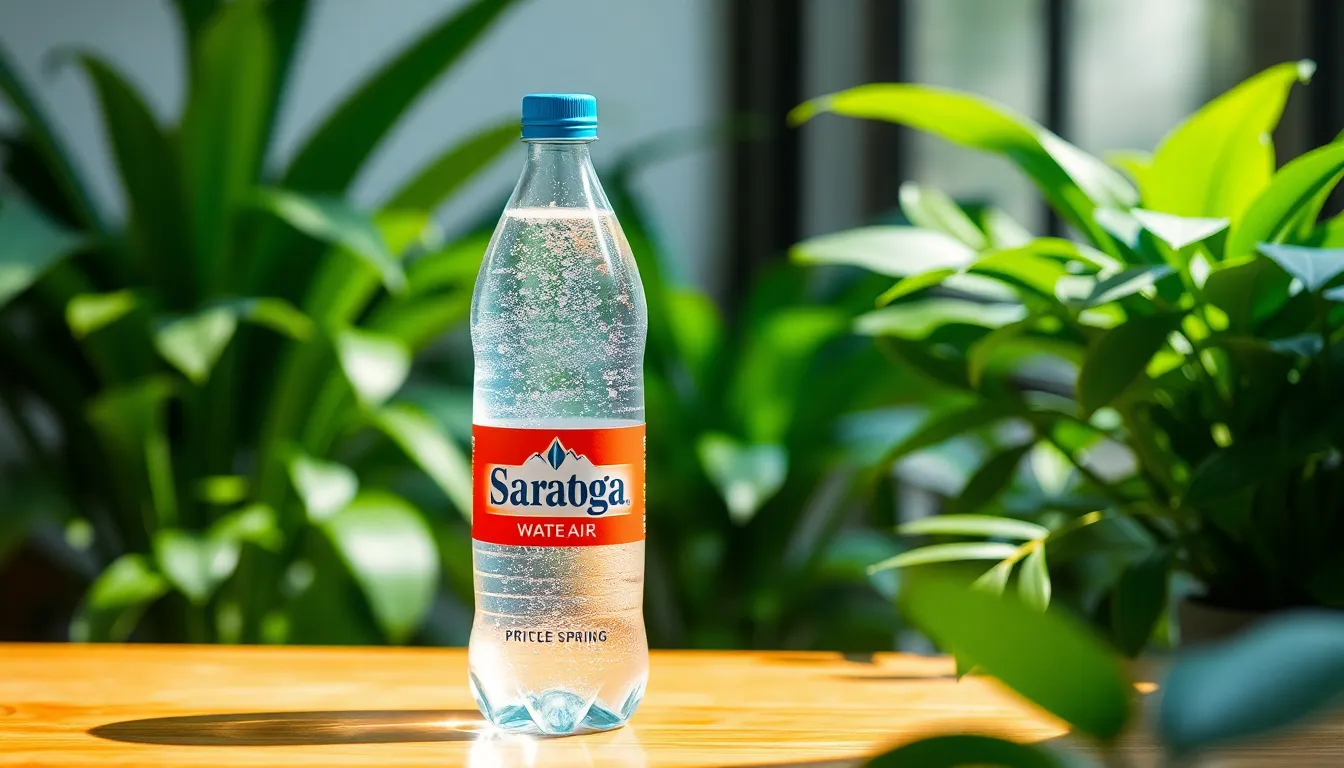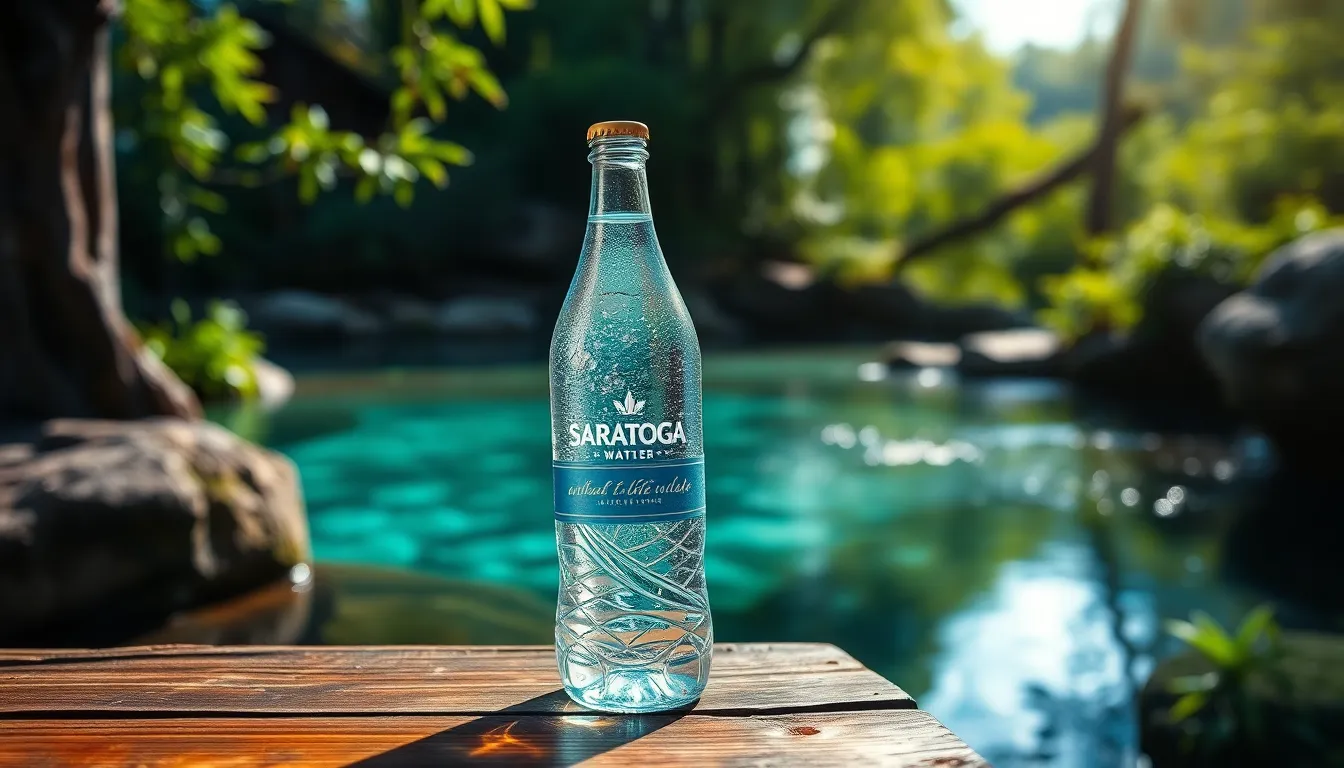When it comes to hydration, not all waters are created equal, and Saratoga water is proof of that. Known for its crisp taste and sparkling charm, this premium bottled water has a fan club that’s as devoted as a dog waiting for its owner to come home. But what’s the price tag for a liter of this liquid gold?
Table of Contents
ToggleOverview of Saratoga Water
Saratoga water is renowned for its distinctive crisp taste and sparkling quality. This bottled water offers a refreshing experience, appealing to both casual drinkers and water connoisseurs. Many consumers appreciate its mineral content, which contributes to the flavor and mouthfeel.
The brand maintains a loyal customer base that values its premium nature. Packaging typically showcases elegant designs, enhancing the overall product appeal. Sustainability also plays a role, with many bottles being recyclable.
Pricing for Saratoga water varies, but consumers often pay a premium for this high-quality product. The cost of 1 liter generally hovers around several dollars, reflecting its status as an upscale choice. Comparisons with other bottled waters highlight Saratoga’s unique qualities, justifying the price point for many.
Quality control measures ensure that each bottle meets strict standards, providing assurance to purchasers. Reliable supply chains maintain availability in various retail settings. Availability spans both online platforms and brick-and-mortar locations.
Saratoga water stands out as a premium offering in the bottled water market, appealing to those who prioritize taste, quality, and aesthetics. People looking for hydration options often choose this brand for its exceptional attributes and refreshing taste. The brand’s dedication to excellence consistently attracts consumers seeking more than just ordinary water.
Factors Influencing Saratoga Water Price 1 Liter

Several elements contribute to the price of Saratoga water per liter. Understanding these elements clarifies why this premium product holds a higher price point.
Production Costs
Production costs play a significant role in determining the price of Saratoga water. The brand sources its water from natural springs, which incurs expenses for extraction and bottling. Quality control measures ensure purity and taste, adding to manufacturing costs. Equipment used for bottling and labeling also represents a substantial investment. Each bottle involves unique design considerations that enhance visual appeal, reflecting the brand’s upscale positioning. These factors combined culminate in a higher production cost that ultimately affects the retail price per liter.
Distribution Expenses
Distribution expenses significantly influence the final price of Saratoga water. Transportation costs rise due to the need to maintain optimal conditions for the bottled water through various supply chains. Retail partnerships and logistics require careful management to ensure consistent availability. Storage facilities must also meet specific standards to protect product integrity. Sourcing sustainable packaging materials adds another layer of cost, aligning with the brand’s commitment to sustainability. All these distribution-related expenses contribute to the overall retail price of Saratoga water, making it a more exclusive offering in the bottled beverage market.
Comparison with Competitors
Saratoga water’s premium price sets it apart from many other bottled water brands.
Other Bottled Water Brands
Brands such as Evian and Perrier offer competition in the upscale bottled water market. Pricing for Evian typically remains in a similar range, around two to five dollars per liter, while Perrier often retails for slightly more. Many consumers compare mineral content, taste, and brand reputation when selecting bottled water. Unique packaging also captures consumer attention, with varying designs reflecting different brand identities. While some consumers prioritize hydration, others seek a luxurious drinking experience, influencing their choices among brands.
Price Variations by Region
Regional price fluctuations for Saratoga water can significantly impact consumer purchasing decisions. In metropolitan areas, prices often reach up to five dollars per liter, reflecting higher transportation and distribution costs. Alternatively, smaller markets may offer it for three to four dollars per liter, attracting more price-sensitive buyers. Certain regions may also experience limited availability, affecting overall pricing strategies. Retailers sometimes implement local promotions to encourage sales, making the price point more competitive across different locales.
Consumer Perception
Consumer perception of Saratoga water closely links to its quality and taste. Many appreciate the crisp taste and sparkling texture that define this brand. Enhanced mineral content elevates flavor and mouthfeel, making it a go-to choice for enthusiasts. Bottled at natural springs, each sip reflects purity, generating positive reviews from loyal customers.
Brand loyalty for Saratoga water is significant. Dedicated consumers value its upscale nature and distinctive packaging. Regular buyers often share their experiences, reinforcing the brand’s reputation. Sustainability commitments resonate with environmentally conscious shoppers, further solidifying customer loyalty. Each bottle serves as a reminder of the brand’s promise of quality, attracting consumers who seek not just hydration but also an aesthetic experience. Choices reflect a desire for authenticity, solidifying Saratoga as a preferred option among bottled waters.
Saratoga water’s premium pricing reflects its unique qualities and commitment to quality. Consumers appreciate not just the crisp taste but also the brand’s dedication to sustainability and elegant packaging. This bottled water has carved out a niche for itself among discerning drinkers who value both flavor and aesthetic appeal.
While it may be priced higher than many competitors, the loyalty it inspires speaks volumes about its reputation. For those seeking a refreshing experience that goes beyond hydration, Saratoga water remains a top choice.







